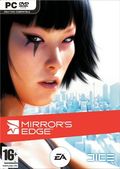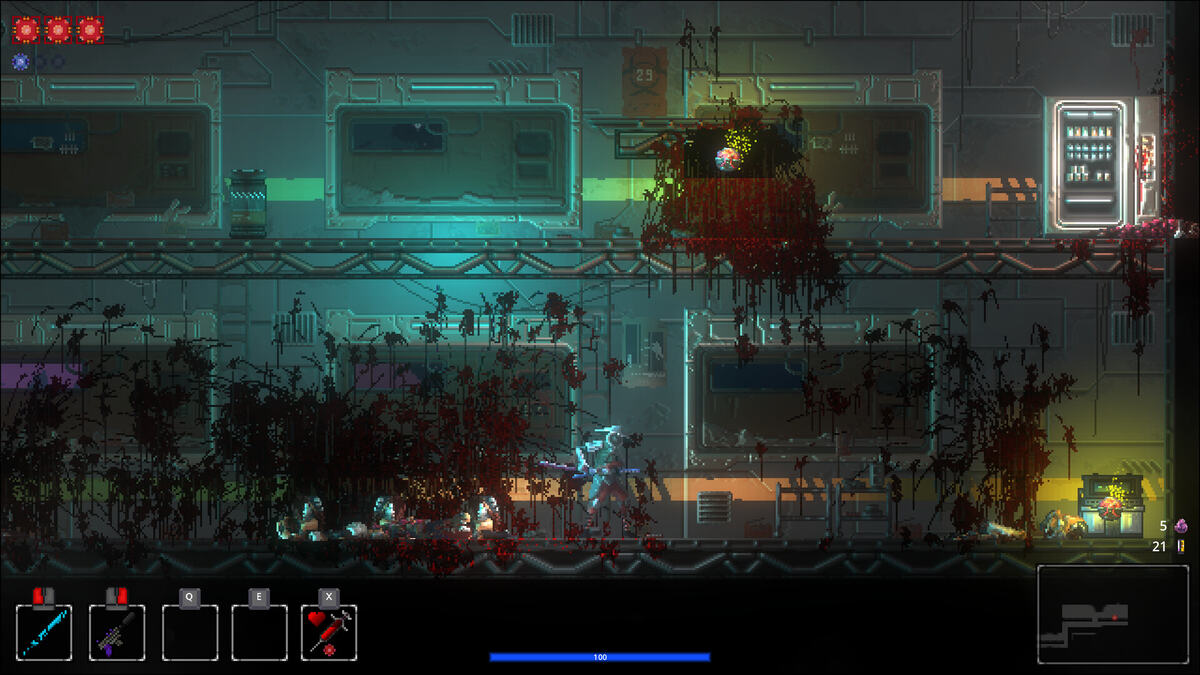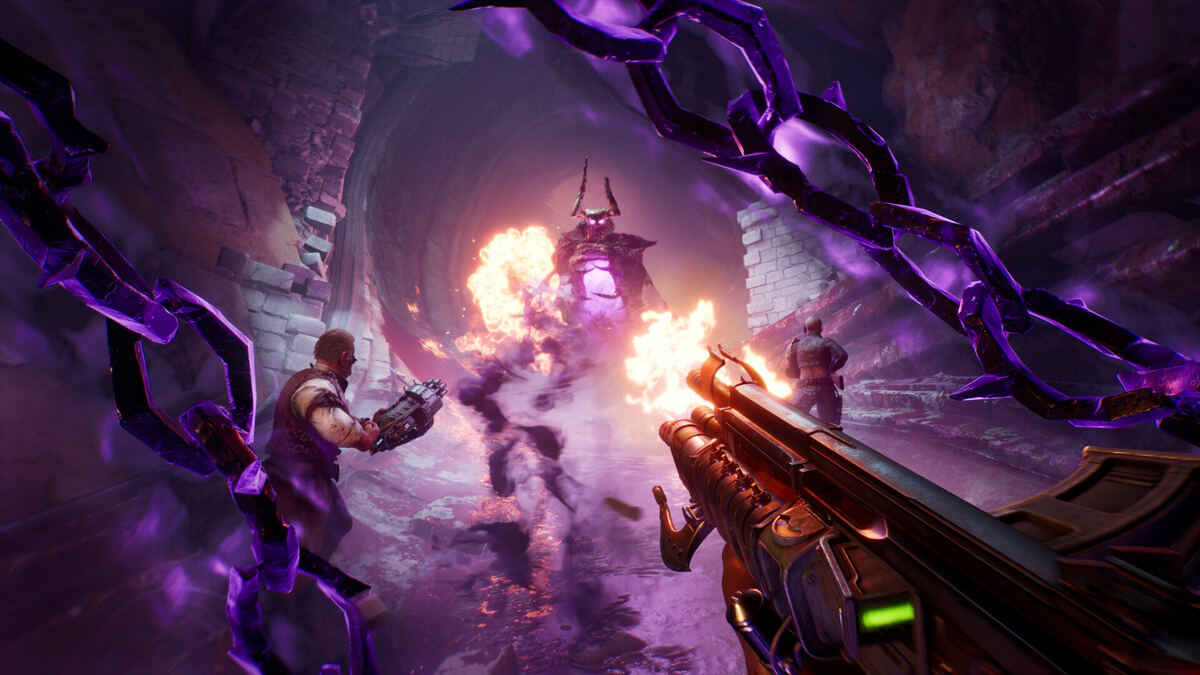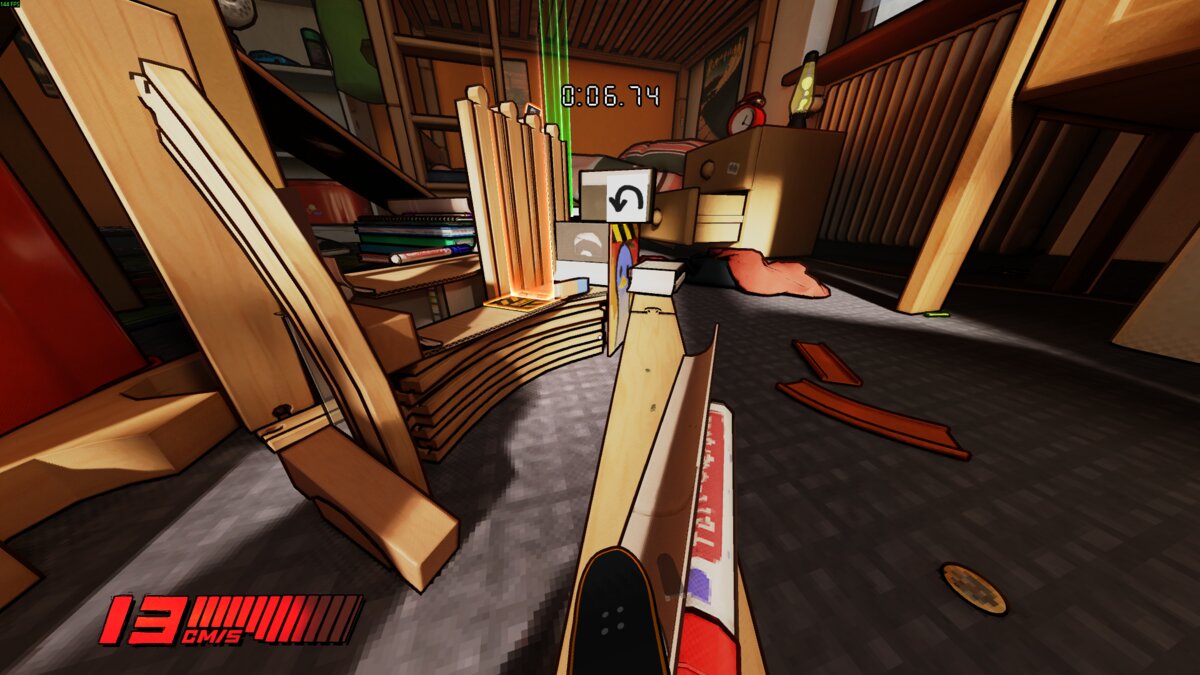You can trust VideoGamer. Our team of gaming experts spend hours testing and reviewing the latest games, to ensure you're reading the most comprehensive guide possible. Rest assured, all imagery and advice is unique and original. Check out how we test and review games here
It’s been a long time coming, but finally, thrillingly, I have a PS3 pad sitting in my sweaty palms and Faith, the ultra cool cyberpunk heroin of DICE’s Parkour first-person action game Mirror’s Edge, is under my control.
Up to this point I’ve only had the jaw dropping in-game trailer and a stunning hands-off demo at an EA event in London to feed my appetite. But now, at E3 2008, in what is by far EA’s busiest behind closed doors booth, I’m sitting on a stool in front of a big screen LCD with Lars Gustavsson, the game’s creative director, who’s guiding me through my first, tantalising steps as information runner Faith.
“We wanted to make someone who’s human, not a bikini babe, not superhuman, god knows what with extra everything,” explains Lars. “She’s an athlete. That’s it. She lives in a society some would call a utopia. It’s for someone who wants a perfect life, a comfortable life. It’s perfect. But the downside is communication is highly monitored. You don’t know who’s watching what you’re doing. The media, the news you get, is monitored and you only get to know what they think you should know.
“People who don’t like this, like Faith, live on the outskirts of society, on the edge of society. For them to get messages across they need to use traditional runners, couriers. That’s what she does. She’s really good at what she does. The whole game has been built around that. She finds the city somewhat hostile. That’s why we have this art style. It’s clean, for her it’s sterile, it’s hostile, it’s dead.”
And with the premise spiel complete, I’m off. There is a brief second, perhaps only a millisecond, where Mirror’s Edge feels odd. It feels strange to be playing a first-person game and not have a gun sticking out the bottom right hand corner of the screen. It feels strange to have to think about how you’re going to use the environment to get where you need to go instead of simply blasting your way through hordes of mutants. But then, as you inch the Dual Shock 3’s left thumb stick forward, and Faith begins to sprint, all those preconceptions, all that weirdness melts away.
I begin my hands on early in the game, directly after the tutorial level. I’m on the rooftops of the city, experiencing for myself what I’ve seen in the in-game trailer. Above is a clear blue sky. Under my feet gleaming white rooftops. I peer over a ledge – the draw distance is incredible. The city is vast, going on for miles. I get a real sense that I can go anywhere and if I fall will certainly die. And the art style, this unique, sanitised, clean, Demolition Man-esque landscape, is beautifully and superbly realised. It’s fresh, unique and utterly compelling.
I’m faced with a fence – all I need to do is sprint and jump with L1 – Faith uses her arms to vault over the fence automatically, then, as I land, a press of L2 to roll and keep the momentum going. Low lying pipes appear from nowhere – I press L2 to slide underneath, and Faith seamless gets up and continues. And that’s it. That’s all I need to know. This is Mirror’s Edge’s simple, context sensitive control toolbox and the world is my oyster.
L1 is reserved for ‘up’ commands and L2 is reserved for ‘down’ commands. Sprint towards a wall and press L1 to wall run. At the end of the run, press L1 again to jump off. Jump onto a zip line and Faith will automatically grab on, sliding down to a rooftop below. Press L2 to let go, L2 to roll as you land and the left thumb stick pushed forward to keep going. Try to jump over something a little too high and you can press L2 at the peak to bring Faith’s legs up, as if running the 100 metre hurdles. Mirror’s Edge is about stringing combinations of L1 and L2 together in one long, seamless race to her goal.
Her goal, in this instance, is a simple one – get a package to another runner, called Celeste, who’s at a bright red communication tower you can see in the distance. This is a routine mission Lars tells me. This is what Faith does. Get the package to the target without the cops catching her, and keep to the rooftops.
What’s not simple are some of Mirror’s Edge’s advanced techniques – the kind that hardcore gamers are guaranteed to spend hours mastering in order to exploit alternative routes through the game’s levels and eek out the fastest completion times ala Mario Kart. One, the 180 degree turn, is a simple press of R1. By double tapping L1 Faith will quickly jump twice if the environment allows (there’s no double jumping here). And, in perhaps the most unrealistic action in the game, you can press Square to slow down time. This reaction time ability is intended to allow players to line up difficult jumps easily, and is not to be used all of the time. Indeed, the reaction time ability can only be used when the targeting reticule – in place to provide a motion sickness preventing point of reference (“like ballerinas” Lars explains) is blue. Once used it turns white and you have to wait for it to recharge again.
I soon see a chance to combine these advanced techniques. There is an obvious path up to a raised platform, which then provides an easy jump to another rooftop. But there’s a less obvious path, one that’s a lot more tricky. It involves multiple wall jumps – L1, R1 to 180, then L1, R1 then a final L1 to jump to the other rooftop. This kind of multiple wall jump is easy in third-person action games. Hell, we’ve been doing this kind of thing for years. But in first-person? In first-person it’s a completely different kettle of fish.
I try it, and fluff it. I try again, and fluff again. After the third botched attempt I decide to take the obvious route. But the experience is etched into my mind. Once I get some proper hands on with preview code, that jump is mine. “There’s endless possibilities with the same toolbox,” says Lars. “That’s why we don’t unlock Faith version 2. We unlock you. You grow with the game.”
Now, on to a zip line – simply jump and Faith will grab on, L2 to drop off – and a red balance beam. By keeping the left thumb stick steadily forward Faith will walk along with all the confidence of a 13 year old from the Chinese State Circus. On the PS3 version, the one we’re playing, you’ll even be able to use the controller to keep your balance. Once finished, it’s on to a big jump, right off a small red ramp towards red pipes running along the side of a horrendously tall building. The idea isn’t to reach the rooftop, but to reach the pipes and climb up.
I take a run up and just before we reach the red ramp press the Square button to slow down time, keeping the targeting reticule slightly down, under Lars’ advice, for more control. Then I jump, falling through the air. Time speeds up. It looks like I’m going to hit the pipe plum, but for some weird reason Faith doesn’t grab on. Instead she plummets to her death. “I’m beginning to think that’s buggy,” says Lars. “Plus we’re going to extend that radius. It’s code in progress.”
It’s hard to express exactly how Mirror’s Edge feels to play. It would be easy to say think of Prince of Persia, a game Lars admits was an inspiration, in first-person. Or even Tomb Raider with less cleavage. But that doesn’t do it justice. Let’s just say jumping from rooftop to rooftop, seamlessly transitioning from jump to roll to slide without slowing down, without reducing momentum, feels like a summer breeze blowing through your hair during sports day at school.
There have been plenty of reservations expressed online to match the glowing enthusiasm. The red guides are one. Will they make the game too easy by “babysitting” the player – showing the player the safe way to go? “Why red?,” says Lars. “We needed one colour and we wanted a clear vibrant colour to guide you. Some people have said is it baby sitting? If I just follow this will I be safe? You can, but it’s not the fastest route. It’s more in the beginning, it’s going to be less and less as you go on. You can turn it off if you don’t like it. You can even turn off the little dot. You can play totally without it. We have a guidance button (Circle), if you’re totally lost you can look at your objective. It will tell you the general direction.”
So, you can turn off the guides if you don’t like them, if you want to play like a pro. And this, we imagine, will be the way to play Mirror’s Edge. The way to play with style. Turn off the red guides, turn off the targeting reticule, risk throwing up but look amazingly cool doing it. Find the quickest, slickest route through the game and then brag about it. In a way, we can see glimpses of Valve’s mind-bending first-person Portal in Mirror’s Edge. And that’s no bad thing.
The slow down reaction time ability is another bone of contention. It doesn’t seem in keeping with the attempt at realism Mirror’s Edge is doing so well to achieve. Like Lars said, Faith is not a superhero, so why then give her ability to slow down time? Indeed why does she see certain objects as red? “The reaction time is because she is so good at this, it’s her way of coping” says Lars. “It’s her way of seeing the world. And we need to depict it to the player. That’s the way we do it.” That’s the explanation. It remains to be seen how it will affect gameplay over long periods of time.
I spy a Time Trial mode option in the game’s opening menu as Lars boots up a later level. This, I imagine, will be for replay value, for online leaderboards and the like. When asked, Lars can’t talk about it. In fact there’s much he can’t talk about, especially regarding the story. But that’s fine. I love surprises, especially when we know they’re going to be good.
I play the third level, set in a giant cylinder inspired by real world Tokyo storm drains. This, I’m told, will show off the game’s combat, and show those who thought the whole game was set on rooftops that there will be variety to the levels. “It was a fear after the trailer people had. They said oh it’s all white,” Lars says.
After swinging on poles, climbing up red metal beams, pressing switches and ledge walking, I eventually make my way to the top of the storm drain. There a welcoming committee of cops greets me. Faith’s combat abilities are all based on martial arts and incorporate the athletic moves she already has at her disposal. So, jump and she will do a flying kick. Run and slide and she will kick low. Or simply punch, if you fancy getting your hands dirty.
Faith can disarm her opponent if she’s close enough and the target weapon briefly glows red. This becomes a lot easier when using the slow down ability, but again, it can’t be used all of the time. At the moment the combat is my biggest concern. It feels clunky at this stage. Weapon fire and enemy reactions aren’t particularly fluid either. Yes, Mirror’s Edge isn’t a shooter, but shooting will form a sizeable chunk of gameplay, especially during the first play through. It’s crucial for DICE to get this right. Given the studio’s heritage with first person shooters, there’s no reason why it won’t be improved before release. And even if it falls just short of the quality of the main platforming, the game won’t force you to fire a single bullet to complete. Lars tells me you can play through the game without firing a weapon, and you’ll be rewarded with the game’s best achievement for doing so. But don’t expect an easy ride.
We learn something else during mission three, although I get the feeling Lars is treading on thin ground with what he tells me. Who’s speaking on the radio I ask? “Mercury,” Lars replies. “He’s also a runner. As a kid she broke into his apartment and tried to steal his TV. He caught her, raised her and they’ve been working together ever since. He runs all the runners, dispatches them. He’s helping them all through the game. Jackknife (also the name of the level) is the other runner she is heading for, to retrieve information.” So there you go. At least we know why Faith’s risking falling hundreds of feet just to get from A to B.
As our hands-on time comes to an end I’m left dazzled. Many of my questions have been answered, replaced by a flood of new ones. But I know for certain that DICE has something here, something special. Something that, hopefully, will prove to be a breath of fresh air when it eventually comes out. The freedom of movement, the liberation of the first-person perspective, the immediately accessible controls, the compelling depth, the entrancing art style, the intelligent story, the uplifting music, the wonderfully designed central character, all of this makes Mirror’s Edge my game of E3 and my most anticipated game of this year.
Mirror’s Edge is due out for PS3, Xbox 360 and PC this November.

/https://oimg.videogamer.com/images/a1ba/mirrors_edge_21.jpg)
/https://oimg.videogamer.com/images/1898/mirrors_edge_10.jpg)
/https://oimg.videogamer.com/images/3310/mirrors_edge_15.jpg)
/https://oimg.videogamer.com/images/9501/mirrors_edge_16.jpg)
/https://oimg.videogamer.com/images/2e54/mirrors_edge_9.jpg)






